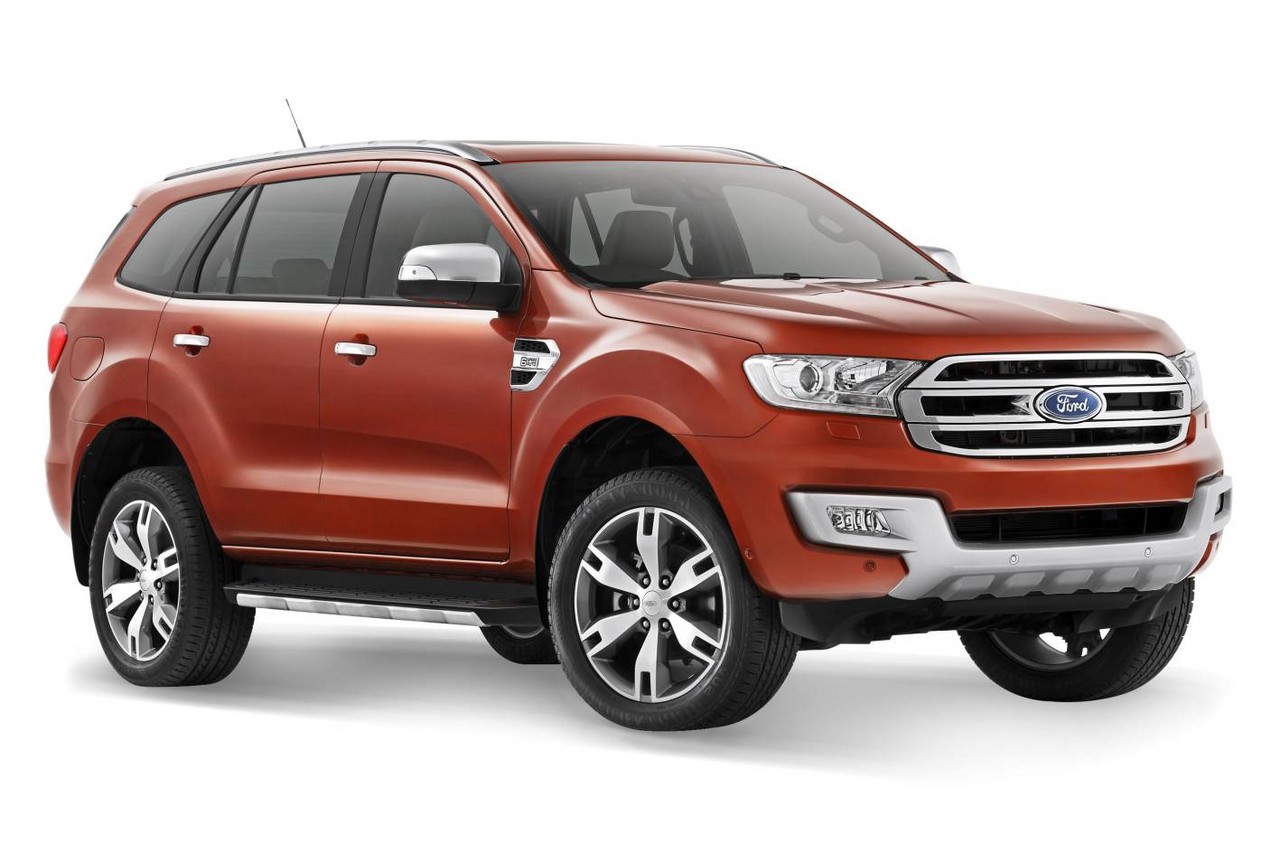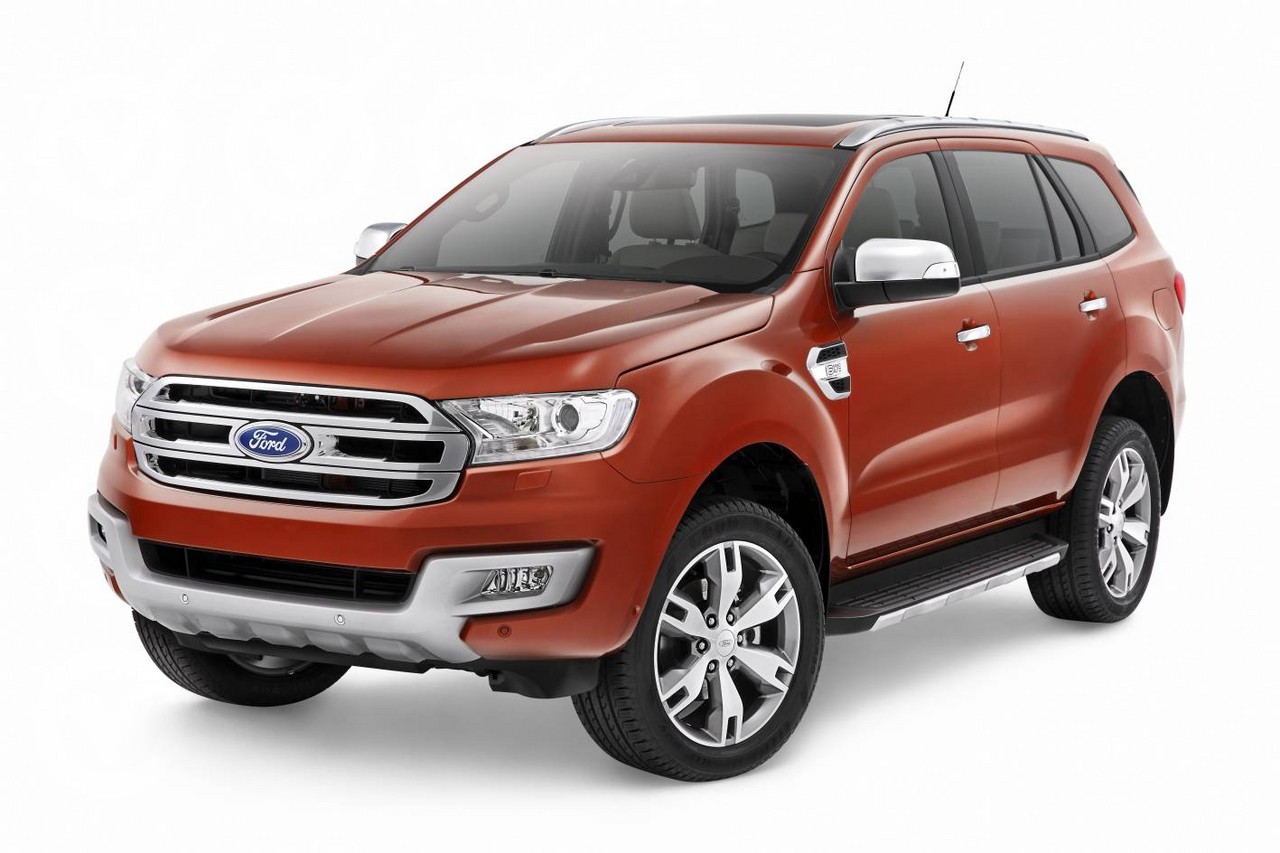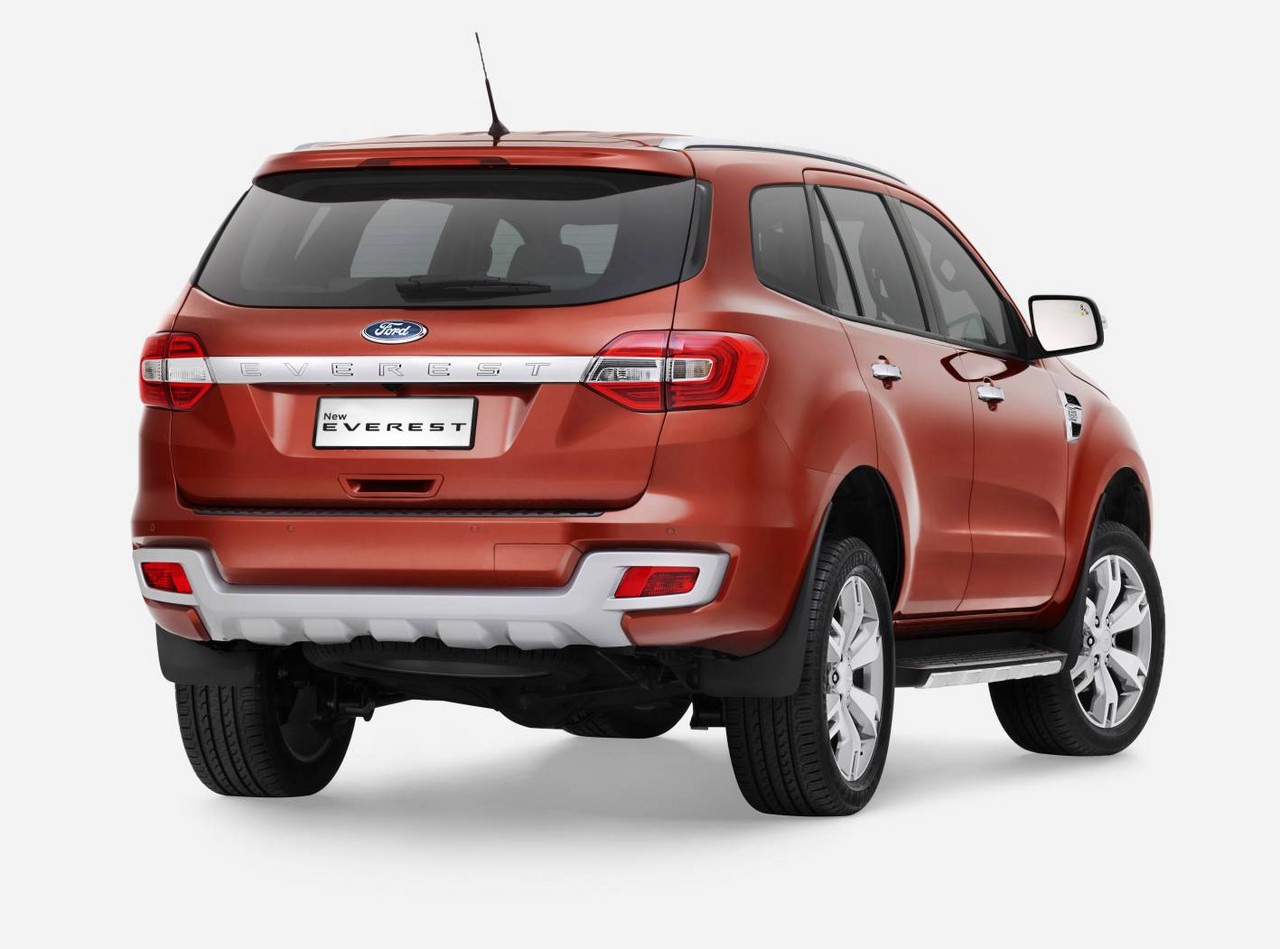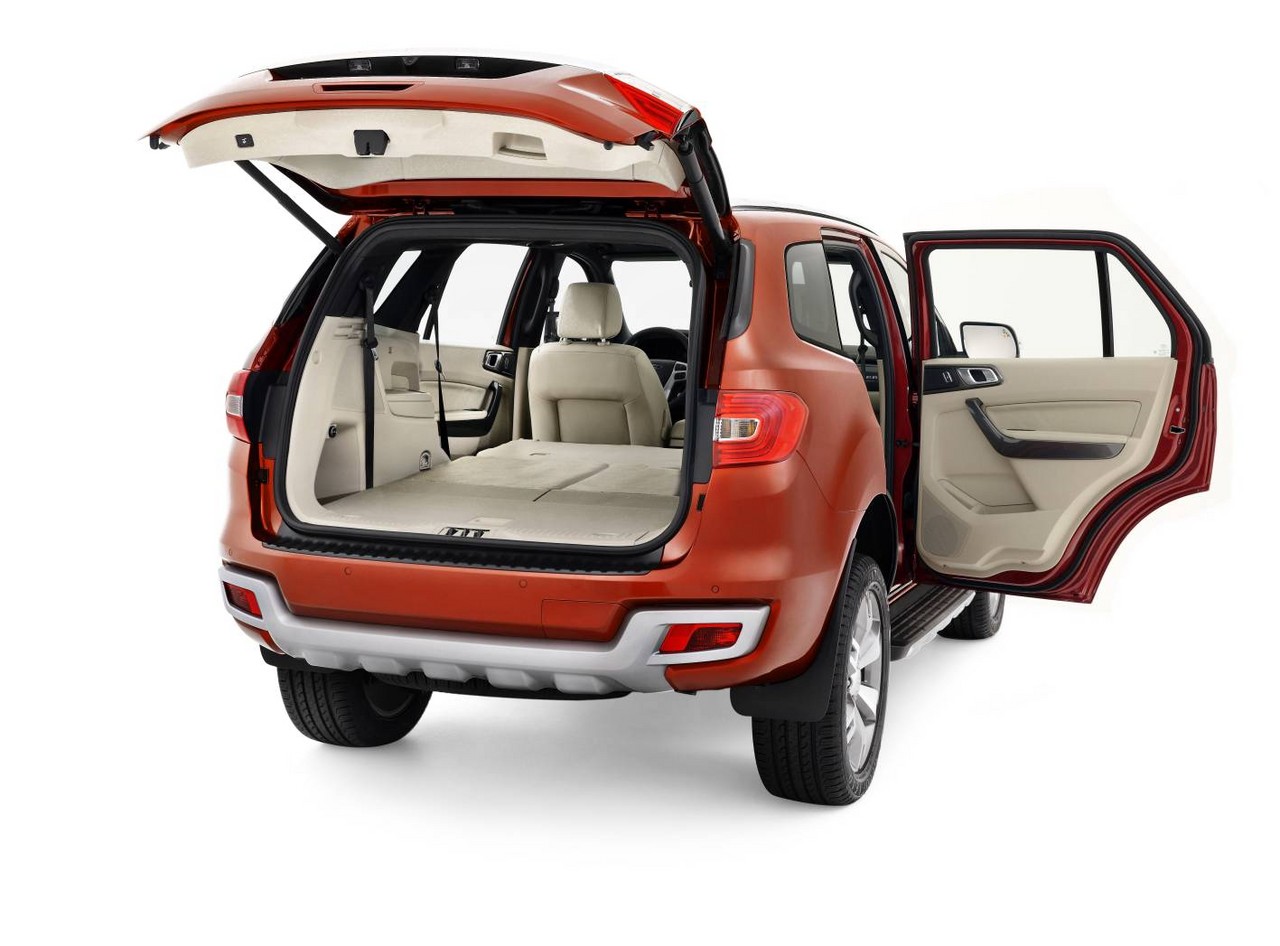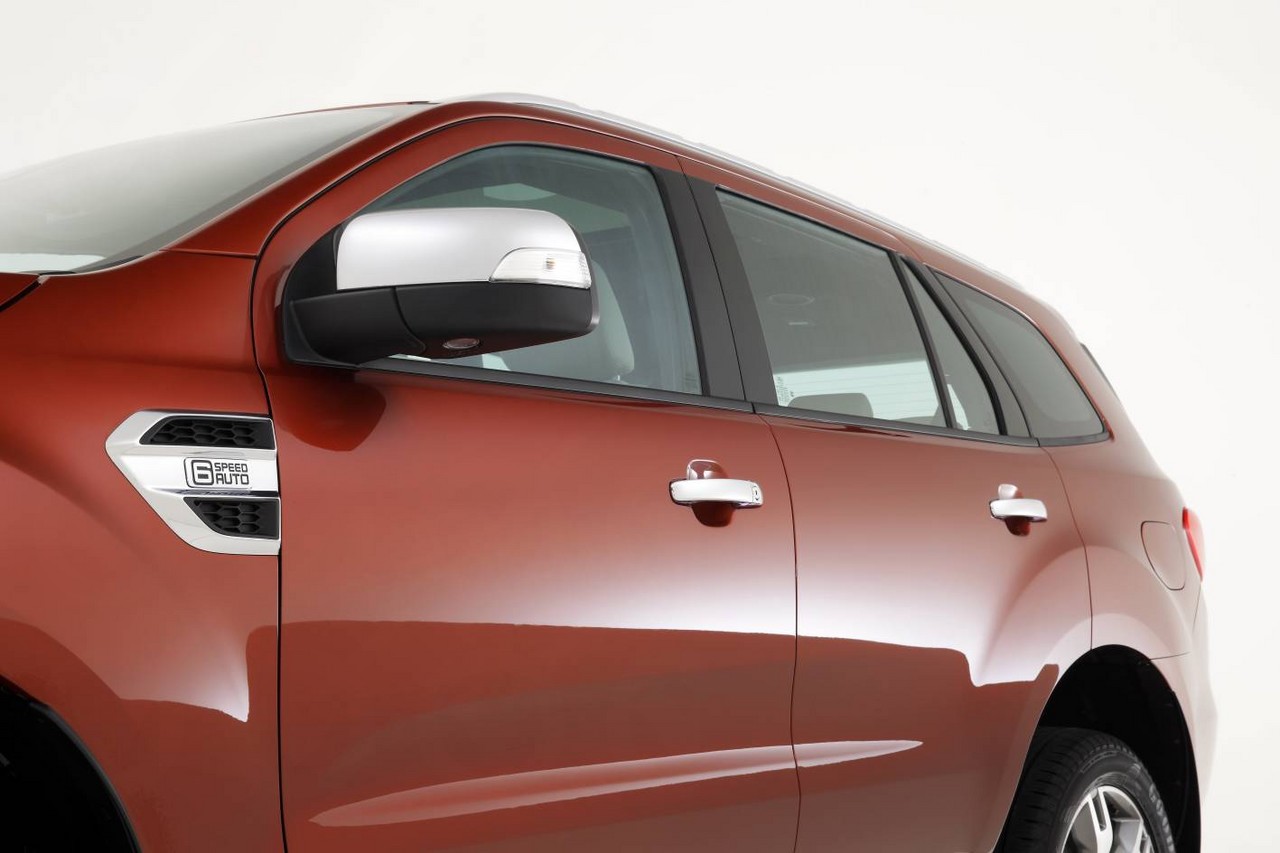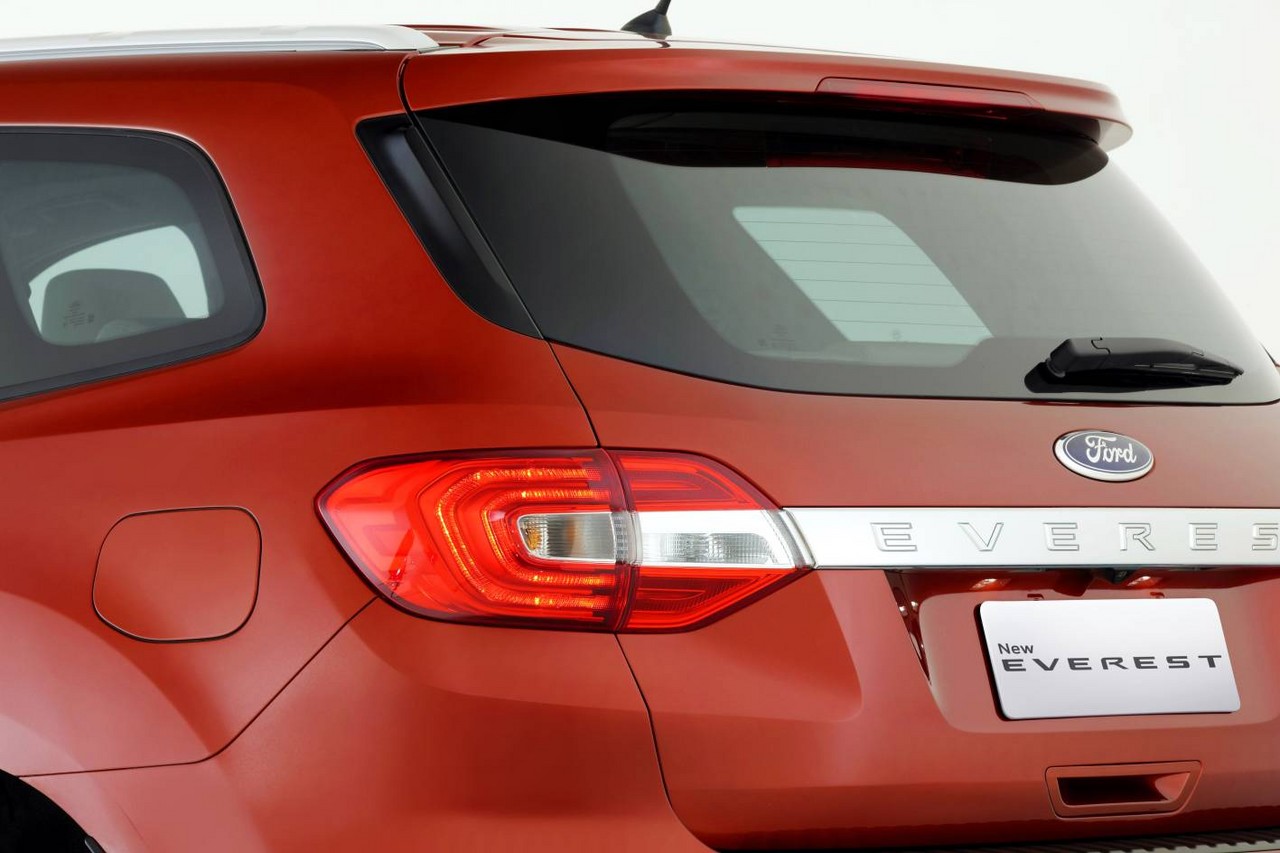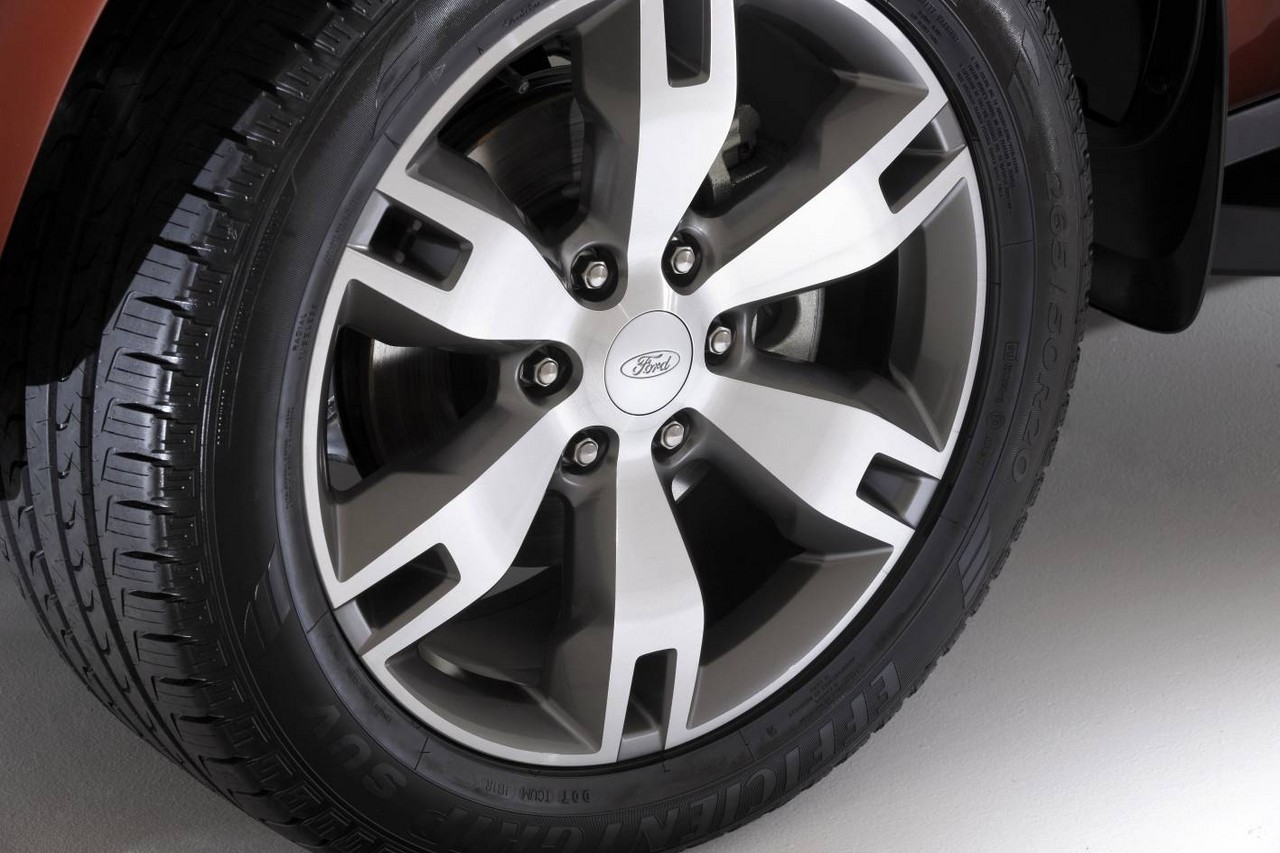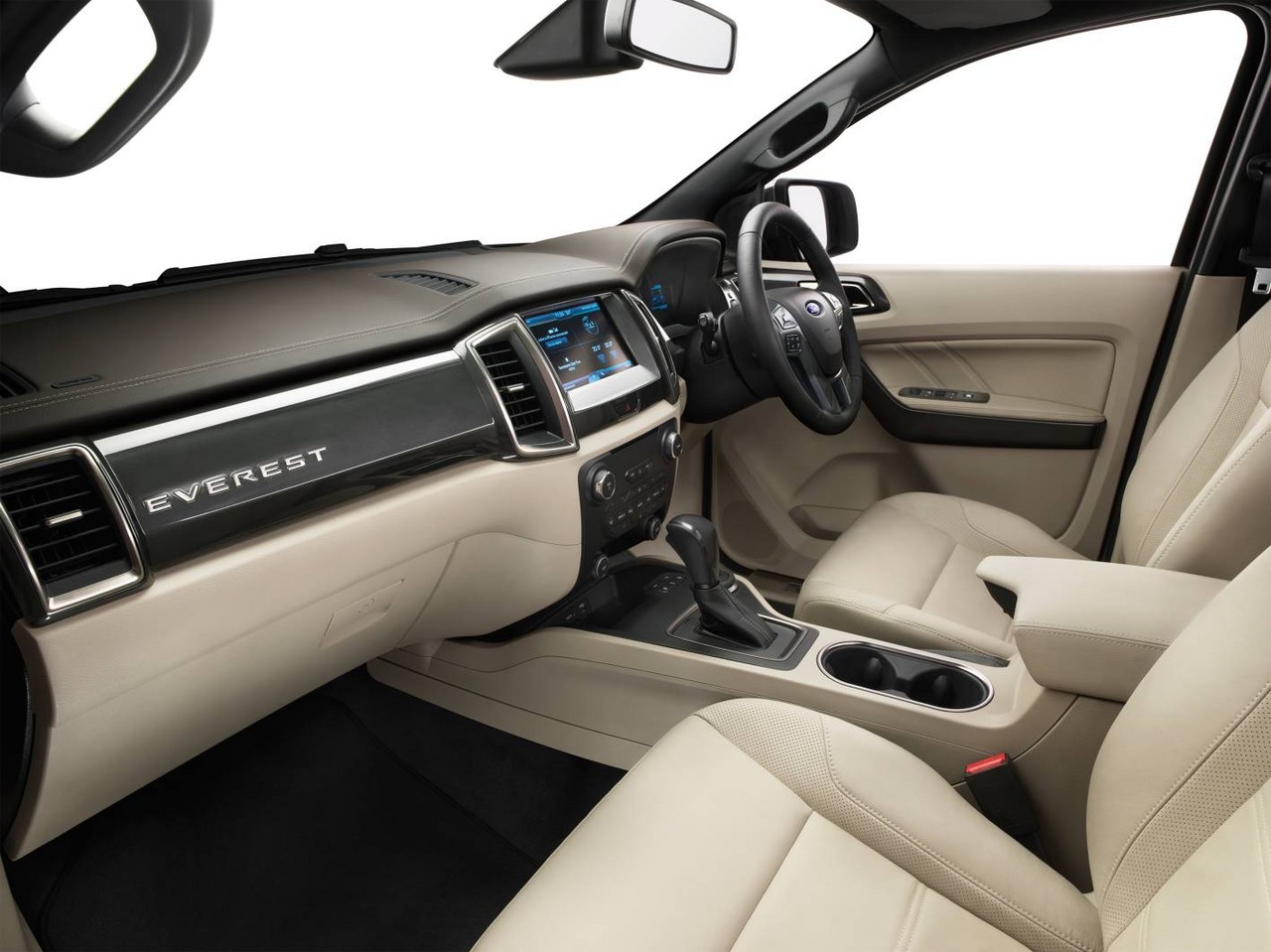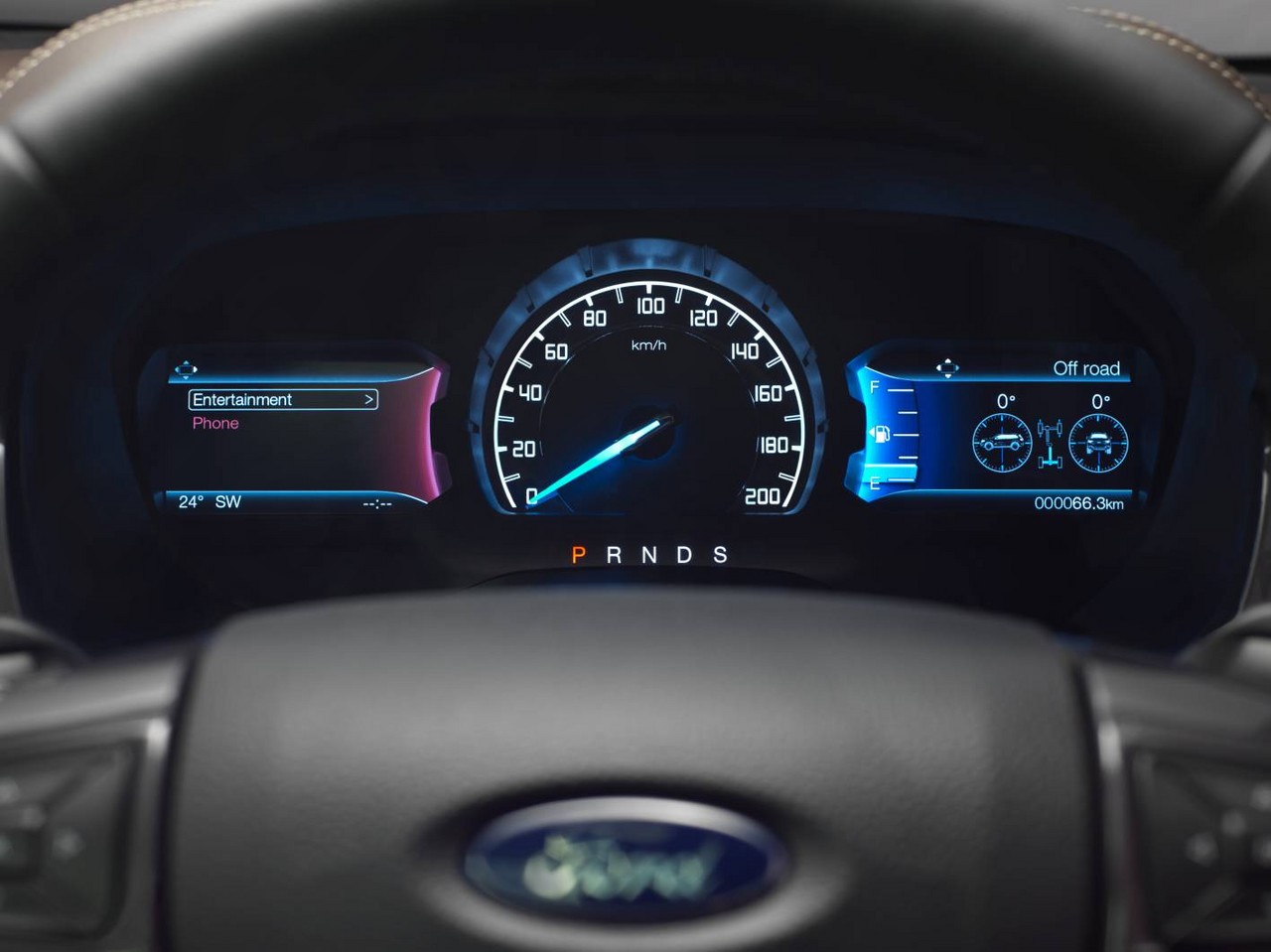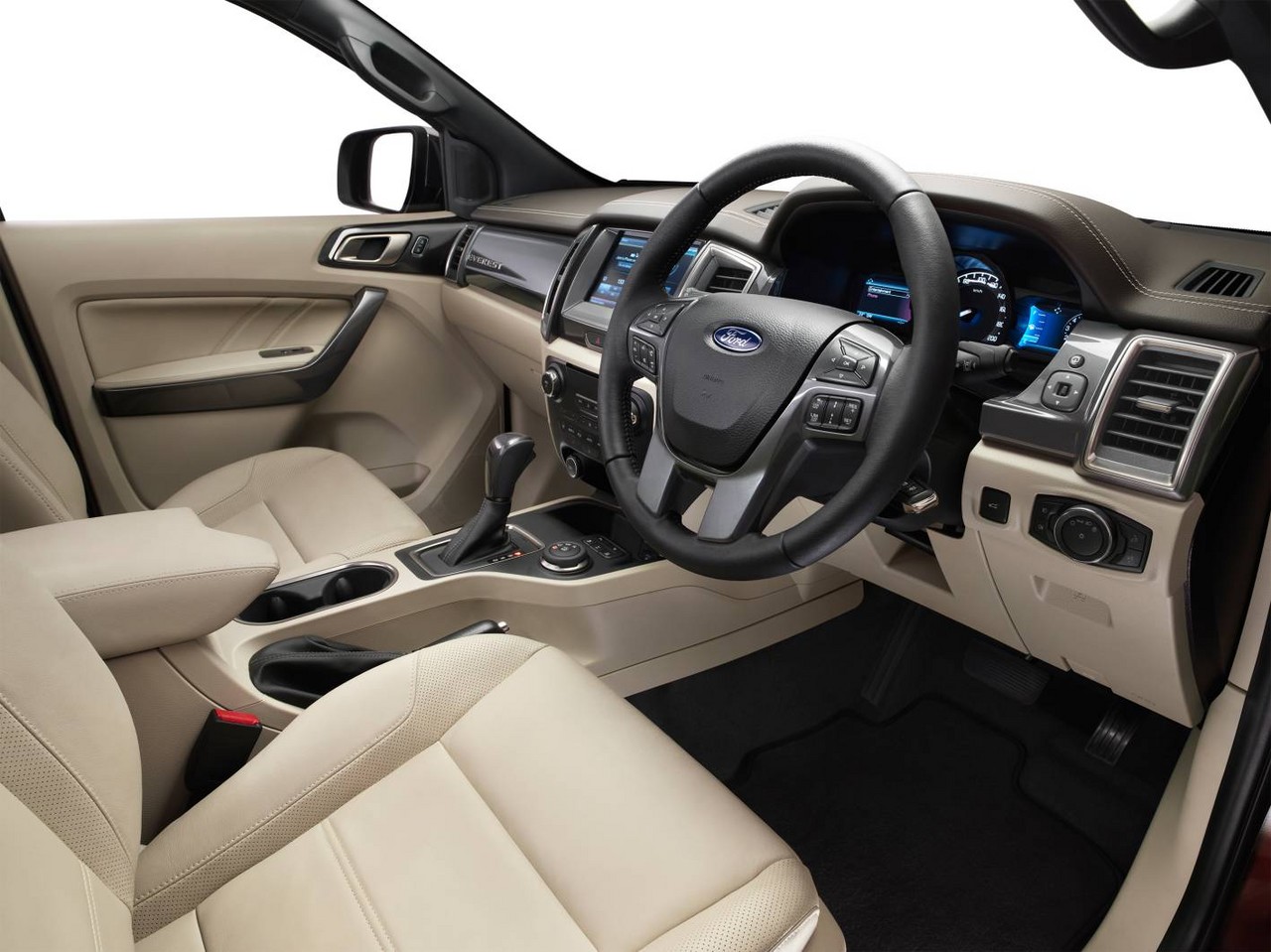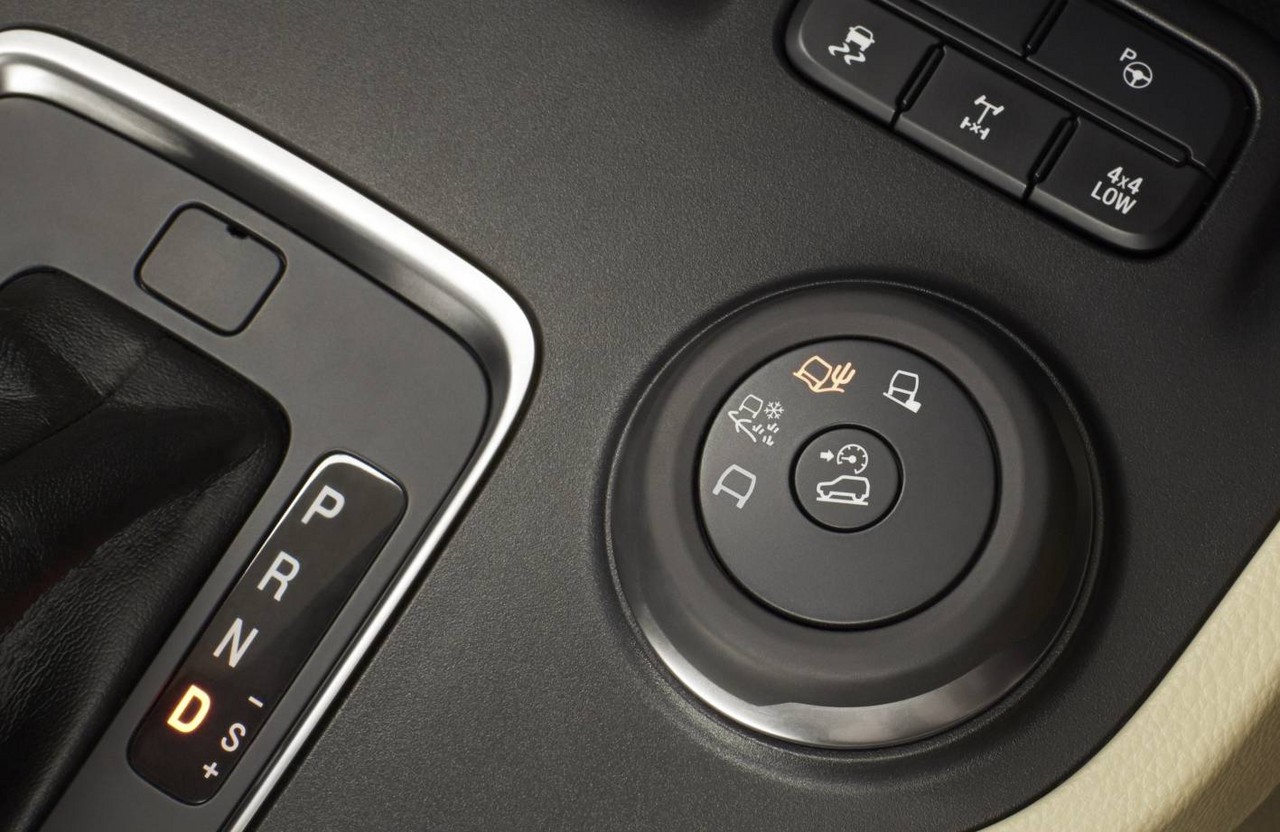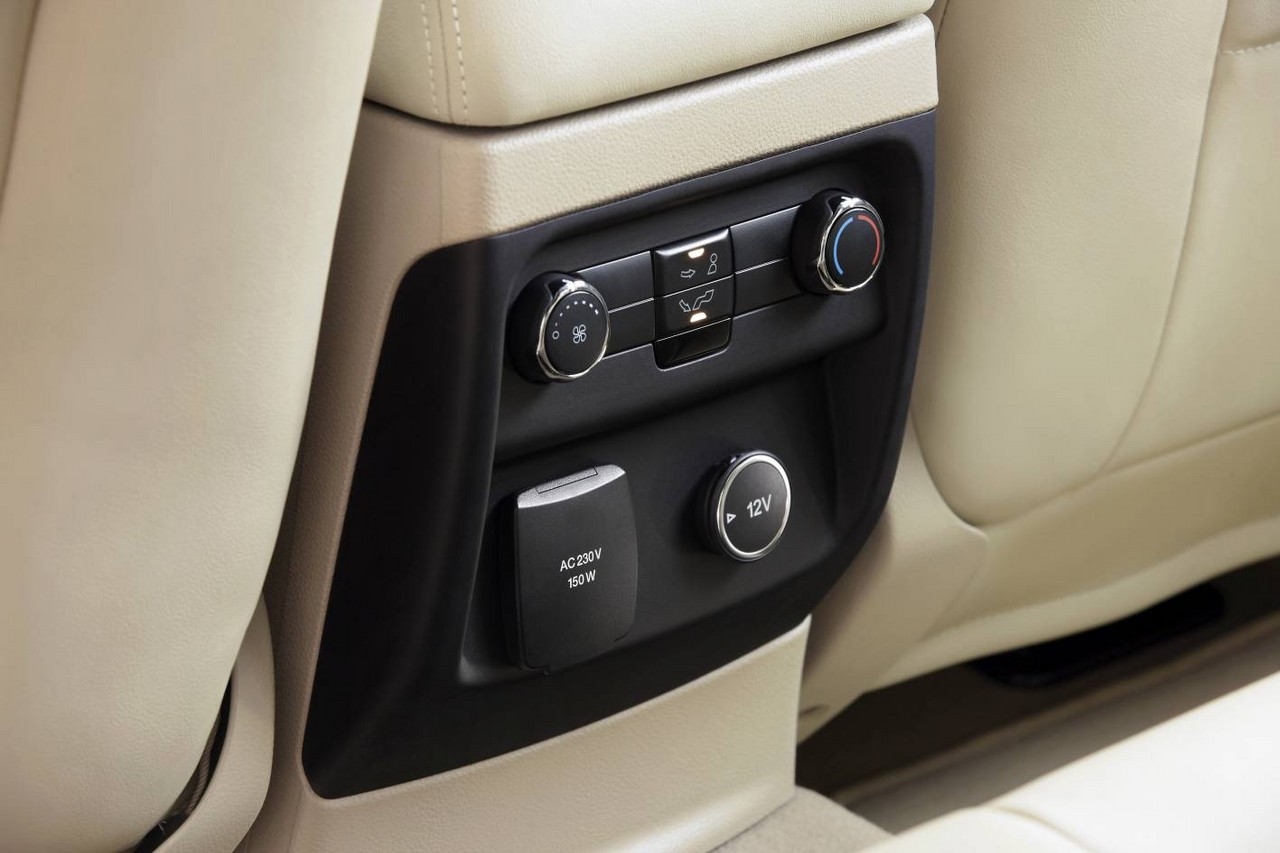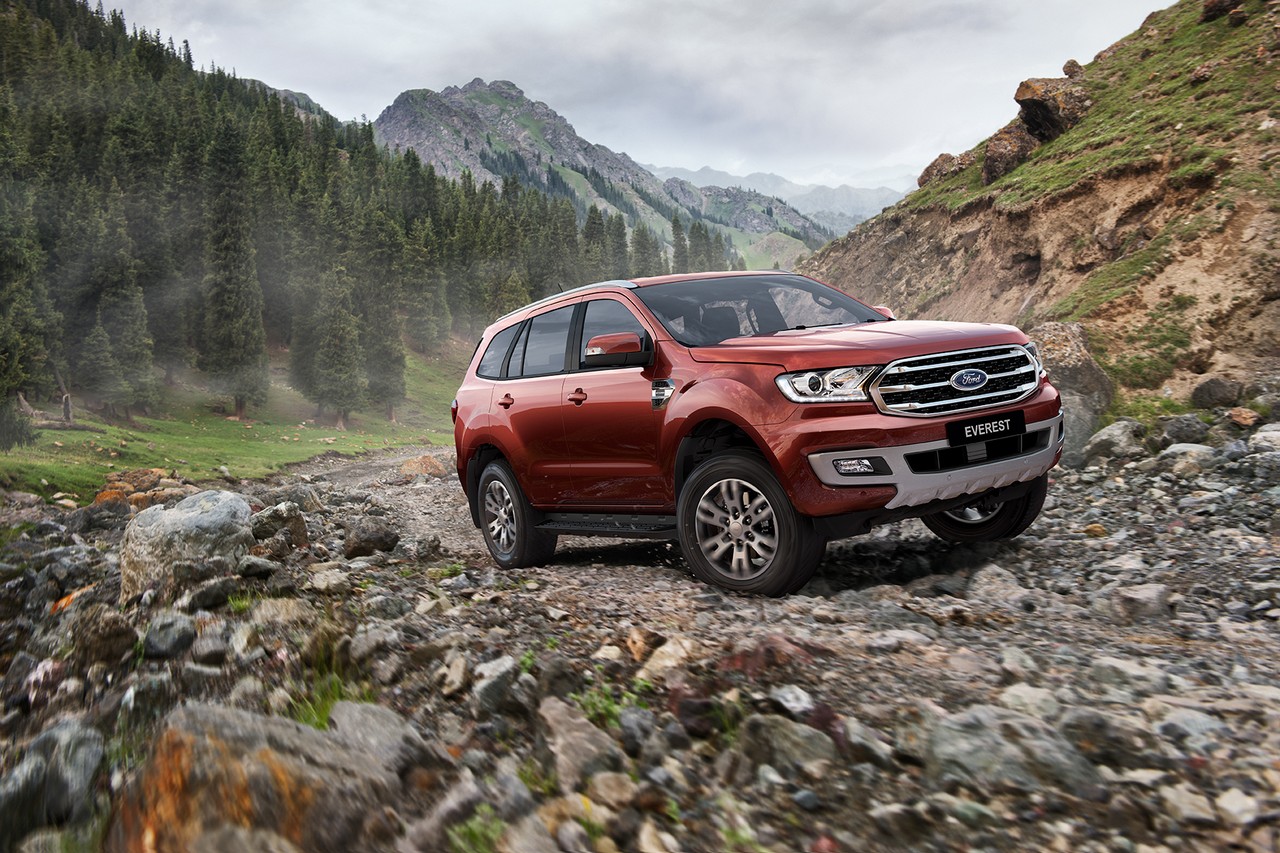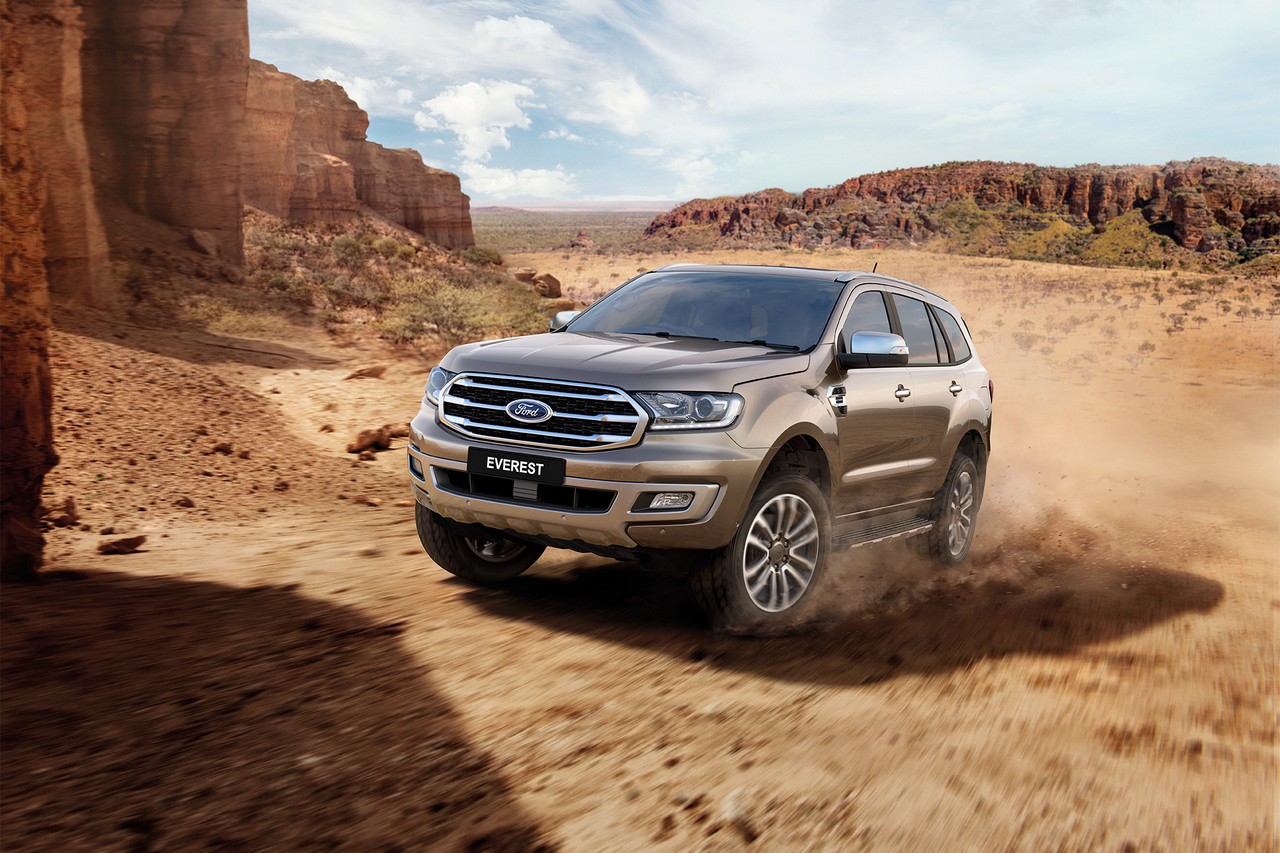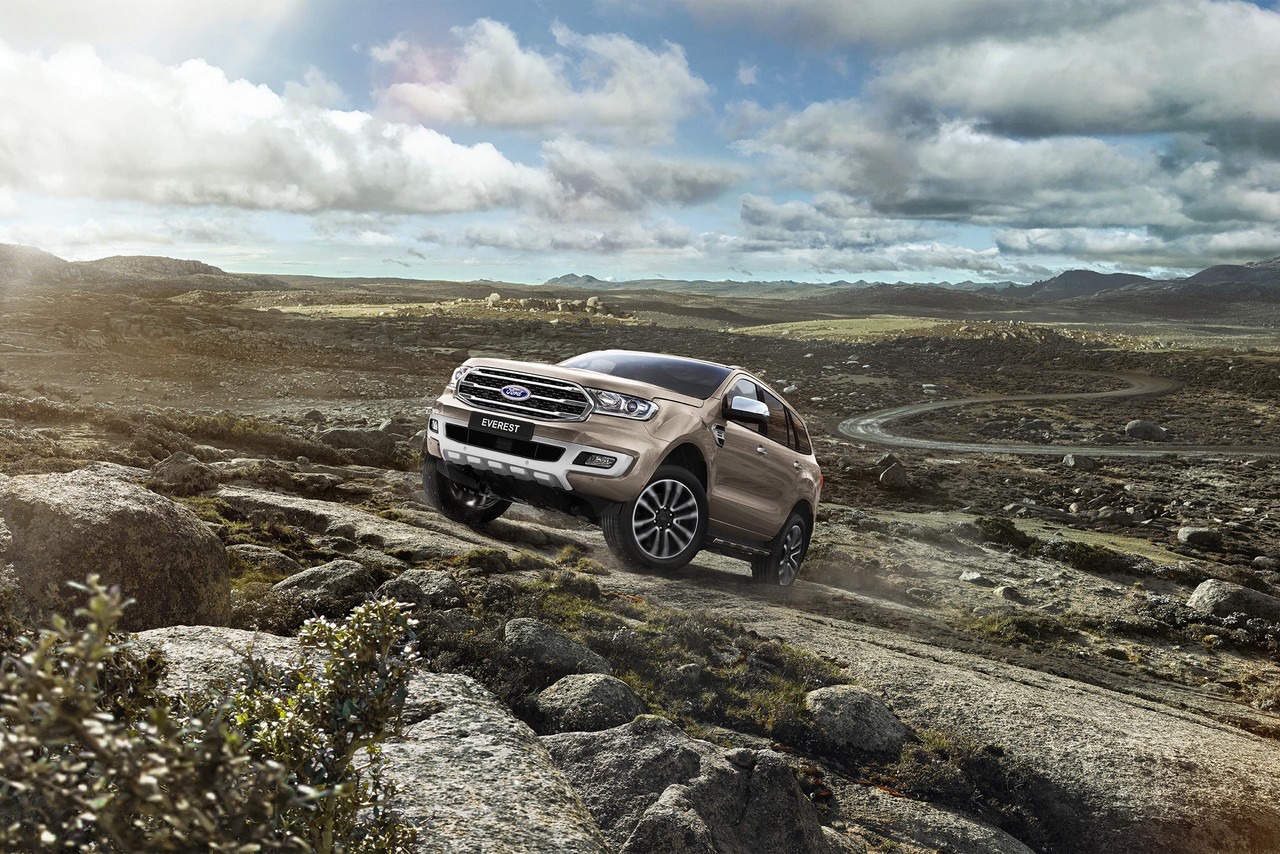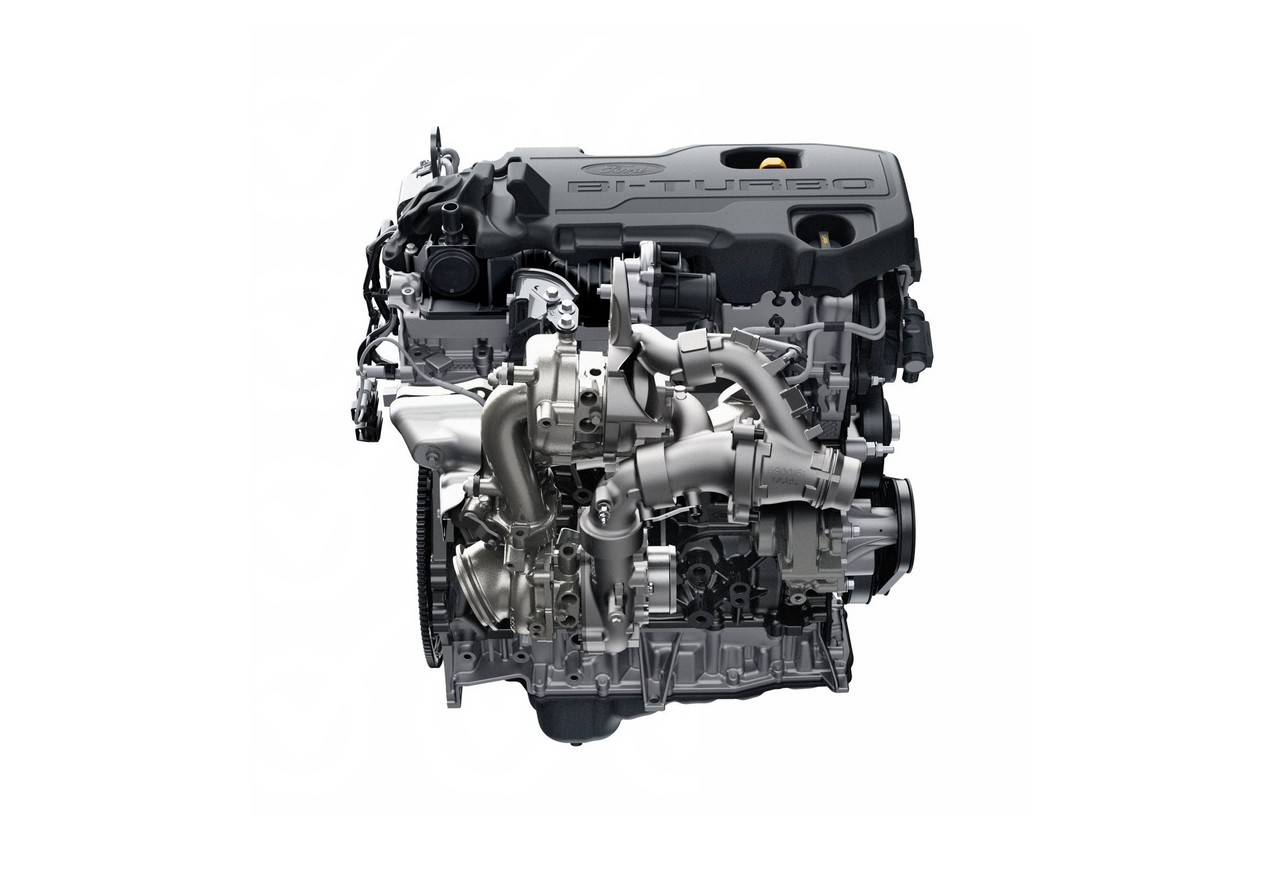
- Frugal 3.2-litre turbo-diesel engine
- Comfortable ride and competent dynamics
- Towing capacity
- There are more practical people movers…
- … and more competent off-roaders
- Steering lacks reach adjustment
- High retail pricing
Review: Ford UA.I Everest (2015-18)
Overview
Released in Australia in October 2015, the Ford Everest was initially offered as an all-wheel drive wagon with seven seats. Manufactured in Thailand, the Ford Everest was powered by a 3.2-litre five-cylinder turbo-diesel engine that was mated to a six-speed automatic transmission. Furthermore, the Ford Everest range consisted of Ambiente, Trend and Titanium editions.
From September 2016, however, the Ford Everest Trend was offered with a rear-wheel drive powertrain and, from April 2017, Ambiente editions were available in rear-wheel drive and with five seats.
3.2-litre Duratorq (P5AT) engine
The 3.2-litre ‘Duratorq’ five-cylinder diesel engine had a cast iron block, aluminium cylinder heads, common-rail direct injection with piezo injectors, a single variable geometry turbocharger, forged connecting rods, double overhead camshafts, four valves per cylinder, exhaust gas recirculation and a compression ratio of 15.7:1.
To comply with Euro V emissions standards, the Ford Everest’s exhaust system used ‘AdBlue’ to reduce NOx tailpipe emissions; specifically, the urea solution was injected into the exhaust gases (downstream of the diesel particulate filter) to react with the NOx gases and reduce them to NO2, O2and water. Ford estimated that the AdBlue tank should only need to be topped up every 15,000 kilometres. Since the Ford Everest’s engine could be started without AdBlue, the ‘Driving Assist’ menu provides five AdBlue status levels:
- OK;
- Less than half full;
- Low – refill soon;
- Low – no engine start in XXXX km; and,
- Empty – refill to start engine.
Over the combined ADR 81/02 test cycle, fuel consumption for the all-wheel drive Ford Everest was 8.5 litres per 100 km.
| Engine | Drive | Variant | Years | Trans. | Peak power | Peak torque |
|---|---|---|---|---|---|---|
| 3.2-litre turbo-diesel I5 | AWD | Ambiente, Trend, Titanium |
2015-18 | 6sp auto | 143 kW at 3000 rpm | 470 Nm at 1750-2500 rpm |
| RWD | Ambiente | 2017-18 | ||||
| Trend | 2016-18 |
Torque on Demand AWD system
The Ford Everest was available with a ‘Torque on Demand’ all-wheel drive system. In normal conditions, the engine’s torque was directed to the rear wheels, though torque could be directed to the front wheels in the event that a loss of traction is anticipated. The all-wheel drive system also included:
- A transfer case that could be manually locked in low-range for full-time four-wheel drive; and,
- An electronic locking rear differential that could lock to prevent the rear wheels from spinning during off-road use or be locked via the ‘differential lock’ button.
The Ford Everest’s all-wheel drive system included a ‘Terrain Management System’ (TMS) with four selectable modes that adjusted throttle response, transmission programming, operation of the torque transfer unit and traction control settings –
- Normal: torque was directed to the front wheels when needed – based on steering and throttle inputs – to minimise front wheel slip;
- Snow, Gravel and Grass: prioritised maintaining traction on slippery or loose surfaces;
- Sand: provided aggressive torque transfer and higher throttle sensitivity; and,
- Rock: worked in conjunction with low-range four-wheel drive to provide maximum traction and low-speed control.
The Everest’s AWD system also included a Hill Descent Control (HDC) function that – when engaged – automatically applied the brakes to maintain a set speed on descents, enabling the driver to focus on steering the vehicle and monitoring the terrain ahead.
Body and dimensions
Sharing its platform with the Ford PX Ranger , the Ford Everest was 4892 mm long, 1860 mm wide (excluding mirrors), 1837 mm tall and has a 2850 mm long wheelbase. With its 225 mm ground clearance, the Ford Everest has a maximum wading depth of 800 mm, an approach angle of 29.5 degrees, a ramp over angle of 21.5 degrees and a departure angle of 25 degrees. When fitted with a towbar (available as a $1000 extra-cost option), the Ford Everest had a maximum towing capacity of 3000 kg.
Inside, the Ford Everest initially had 50:50 split and folding third row seats; when lowered, cargo capacity for the Ford Everest was 2010 litres.
Suspension and steering
The Ford Everest had independent, double front suspension with a stabilising torsion bar. Furthermore, the Everest had a live rear axle with coil springs, trailing arms and Watts linkages.
The Ford Everest had rack-and-pinion steering with electric power assistance (EPAS).
Safety equipment
Standard safety equipment for the Ford Everest included dual front airbags, a driver’s knee airbag, front seat-mounted side airbags, full-length curtain airbags (i.e. for all three rows of occupants), ABS, electronic brake force distribution, brake assist, electronic stability control (including roll stability control and trailer sway control), traction control and front seatbelts with pre-tensioners and load limiters. The Everest was also fitted with Ford’s ‘Curve Control’ which could detect when a vehicle entered a curve too quickly and applied four-wheel braking to reduce vehicle speed.
The Ford Everest Trend and Titanium were further equipped with:
- Adaptive Cruise Control: a radar-based cruise control system which could maintain a set distance from the vehicle ahead. If the system detected that the vehicle ahead was decelerating or too close, it could apply the brakes to maintain the set distance. Once the road was clear, the system then accelerated the vehicle back to the desired cruising speed;
- Forward Collision Warning: using an optical radar, the driver received audible and visual warnings when a collision with a vehicle ahead was anticipated;
- Lane Departure Warning and Lane Keeping Aid: using a forward facing camera, Lane Departure Warning alerted the driver if the vehicle unintentionally drifted out of its lane. Furthermore, the Lane Keeping Aid would actively steer the Everest back into its lane; and,
- A ‘Driver Alert’ system that monitored driver behaviour for signs of fatigue and issued a warning if detected.
The range-topping Ford Everest Titanium was fitted with Ford’s Blind Spot Information System (BLIS), a sensor-based system which displayed an alert in the side mirror when a vehicle was detected in the Everest’s blind-spot. Furthermore, the rear cross-traffic alert function provided a warning if traffic was detected approaching from the side of the vehicle as could occur when reversing out of a parking space.
ANCAP crash testing
In ANCAP crash testing , the Ford Everest received a five star adult occupant protection rating with a score of 35.98 out of 37. In the frontal offset test, protection of the front passengers was generally rated as good, although chest and lower leg protection for the driver was rated as acceptable (i.e. a slight risk of serious injury). In the side impact test, however, maximum points were awarded.
Features: Ford Everest Ambiente
Standard features for the Ford Everest Ambiente included 8.0J x 17-inch alloy wheels, an eight speaker sound system with a CD player, Ford’s ‘SYNC’ connectivity system with voice control, Bluetooth mobile phone connectivity and auxiliary inputs (3.5 mm/USB/iPod), an Interior Command Centre (ICC) with 4.2-inch colour TFT screen, air conditioning, cruise control, front fog lights, automatic headlights, rear view camera, rear parking sensors, 50:50 split and folding third row seats, remote central locking, power windows and mirrors, four 12 volt power sockets, one 230 volt power socket, black roof rails, an alarm and immobiliser.
As standard, the Ford Everest also featured ‘Active Noise Cancellation’ which used three strategically placed microphones inside the cabin to detect and measure noise. A control module then used these inputs to generate reverse phase sound waves which were transmitted through the audio system to cancel or reduce undesirable noises.
Features: Ford Everest Trend
Compared to the standard Everest, the Ford Everest Trend was further equipped with 8.0J x 18-inch alloy wheels, a ten speaker sound system with DAB+ digital radio, two USB ports and an SD card slot, dual-zone climate control air conditioning, ICC with an eight-inch colour touchscreen, halogen projector headlights, automatic high beam control, daytime running lights (bulb type), front parking sensors, rain-sensing wipers, leather trimmed steering wheel, door mirrors with heating and folding functions, heads-up display (HUD), an electrochromatic rear view mirror, illuminated vanity mirrors, rear privacy glass, floor mats, a power-operated tailgate, instrument cluster with dual 4.2-inch colour screens and painted roof rails.
Visual cues for the Everest Trend (and Titanium) included a chrome front grille and running boards, body-coloured door handles and door mirrors.
The Ford Everest Trend also included Ford’s ‘MyKey’ which enables the owner to program a key that – when used – can limit top speed, maximum audio volume, disable the sound system until seatbelts are fastened and prevent the driver from deactivating driver assistance and safety technologies.
Features: Ford Everest Titanium
The range-topping Ford Everest Titanium was distinguished by its 8.5J x 20-inch alloy wheels, eight-way power adjustable and heated front seats, leather seat trim, satellite navigation with traffic management channel, HID headlights with washers, LED daytime running lights, leather gear shifter, power folding third row seats, powered panoramic glass sunroof, ambient lighting, illuminated front scuff plates and tyre pressure monitoring. The Everest Titanium was also fitted with ‘Active Park Assist’ which provided automated steering of the vehicle for parallel parking such that the driver only needed to control the speed of the vehicle.
The Everest Titanium was identifiable by its chrome door handles and side mirrors, metallic finish running boards and exterior scuff plates with ‘Everest’ graphic.
From September 2017, the Ford Everest Titanium could be specified – as a no-cost option – with 8.0J x 18-inch alloy wheels with 265/60 R18 tyres (with a full-size alloy spare wheel) rather than the standard 8.5J x 20-inch alloy wheels with 265/50 R20 tyres. This option was introduced to provide the Everest Titanium with greater off-road capability.
September 2016: Ford Everest update
In September 2016, the Ford Everest range was expanded with rear-wheel drive Ford Everest Trend models. Furthermore, the post-September 2016 Ford Everest Trend and Titanium were equipped with Ford’s ‘SYNC 3’ connectivity system which included Apple CarPlay, Android Auto, a faster processor, ‘more conversational’ voice recognition, an improved graphic user interface (GUI) and ‘pinch and swipe’ capability for certain features.
For the post-September 2016 Ford Everest, two sets of ISOFIX anchorage points were added for the second row outboard seats (in addition to the five existing rear-of-seat tether child seat anchorage points).
April 2017: Ford Everest update
In April 2017, standard features for the Ford Everest Ambiente were extended to include Ford’s ‘SYNC 3’ connectivity system, a ten speaker sound system with digital radio tuner (DAB+), dual-zone climate control air conditioning and an instrument cluster with dual 4.2-inch colour displays.
Options
Extra-cost options for the Ford Everest included –
- A tow bar (for a maximum towing capacity of 300 kg): $1000;
- Satellite navigation for the Everest Trend: $600; and,
- Prestige paint finishes: $500.
Paint colours
The Ford Everest was available in the following paint finishes:
- Sunset;
- Black Mica;
- Metropolitan Grey;
- Blue Reflect;
- Sparkling Gold;
- Aluminium;
- True Red; and,
- Cool White.
Brochure
Related links
Review: Ford UA.II Everest (2018-on)
Overview
Released in September 2018, the Ford UA Series II (UA.II) Everest introduced a 2.0-litre biturbo diesel engine, visual updates and a revised interior. Available for the Everest Trend and Titanium, the 2.0-litre diesel engine had sequential turbocharging whereby a fixed-geometry turbocharger operates spooled up quickly at low engine speeds and a variable geometry turbocharger took over from the fixed-geometry turbocharger at higher engine speeds. The 2.0-litre biturbo diesel engine was mated to a ten-speed automatic transmission.
Visually, the Ford UA.II Everest could be identified by its new grille treatment which incorporated a ‘secondary grille texture’. Furthermore, the Everest Titanium had a new 20-inch split-spoke alloy wheel design in which darker wheel accents accentuated the machine-cut surface of the alloy.
Inside, the Ford UA.II Everest had an ebony interior theme which was complemented by contrast stitching and shadow chrome highlights. Furthermore, soft-touch materials were introduced for contact surfaces to improve tactility.
| Engine | Drive | Variant | Trans. | Peak power | Peak torque |
|---|---|---|---|---|---|
| 3.2-litre turbo-diesel I5 | RWD | Ambiente, Trend |
6sp auto | 143 kW at 3000 rpm | 470 Nm at 1750-2500 rpm |
| AWD | Ambiente, Trend, Sport |
||||
| 2.0-litre biturbo diesel I4 | RWD | Trend, Titanium |
10sp auto | 157 kW at 3750 rpm | 500 Nm at 1750-2000 rpm |
| AWD | Trend, Sport, Titanium |
Safety equipment
As standard, the Ford UA.II Everest Trend and Titanium were equipped with –
- Ford’s ‘Inter-Urban Autonomous Emergency Braking (AEB) with Pedestrian Detection and Vehicle Detection’: operating at speeds above 3.6 km/h, the system could alert the driver to frontal collision risks and, if a collision is imminent, initiate autonomous emergency braking; and,
- Traffic Sign Recognition: could interpret traffic signs and speed limits, and convey this information to the driver via the central touchscreen and instrument cluster.
From May 2019 production, the Ford UA.II Everest Ambiente was equipped with:
- Ford’s ‘Inter-Urban Autonomous Emergency Braking (AEB) with Pedestrian Detection and Vehicle Detection’;
- Lane Departure Warning and Lane Keeping Aid; and,
- Traffic Sign Recognition.
Features: Ford UA.II Everest
As standard, the Ford UA.II Everest was equipped with keyless entry and push-button start.
The Ford UA.II Everest Trend gained high intensity discharge (HID) headlights, while Trend and Titanium were also equipped with a hands-free power tailgate which would open in response to foot motions below the rear bumper.
Where fitted, the satellite navigation system gained a ‘breadcrumbs’ feature which allowed unmarked off-road routes to be mapped as they were traversed. Furthermore, complimentary map updates were be provided for up to seven years when a scheduled service was completed at a participating dealer.
From May 2019 production, the Ford UA.II Everest Ambiente was equipped with automatic high beam control (previously reserved for the Everest Trend and Titanium).
Ford Everest Sport
Based on the Everest Trend, the Ford Everest Sport was released in December 2019. Visually, the Everest Sport could be identified by its 20-inch black alloy wheels, black mesh grille, ‘Everest’ lettering above the grille, black lower bumper sections (front and rear), black door mirrors, black window surrounds and black roof rails. Inside, the Everest Sport had ‘Raceway Blue’ door pulls and door treatments, ‘Sport’ embossed logo on the front seats, and ‘Capital Blue’ stitching for the seats and dash pad.
December 2019 update
From December 2019,
- The Ford Everest Trend, Sport and Titanium variants were equipped with bi-LED headlights; and,
- A windscreen mounted USB port – designed to host dashboard cameras – was fitted as standard across the range. Ford also made the Garmin GA55 Dash Cam available as an extra-cost option.
Brochure
Related links
